Kitcha FitFit – ቅጫ ፍትፍት
Fitfit is broken small pieces of either Injera or Kitcha. Kitcha FitFit is a traditional Eritrean dish that is both simple and deeply satisfying. It’s a dish that brings together the hearty flavors of homemade unleavened flatbread known as kitcha, and a spicy, aromatic blend of berbere and Te’smi. Kitcha fitfit is typically a breakfast dish during holidays or special occasions. It is also one of the most commonly prepared breakfast option postpartum to help with milk production and regain strength.
Reminiscing
The first time I tried to make kitcha fitfit was when I was around 12. I had seen my mom made kitcha fitfit, but she never let me help her. Through my eyes, she made it look like it is easy to make kitcha fitfit. Then one day, I got my opportunity to make kitch fitfit by myself. One summer afternoon, I found myself bored and alone. My parents were at work and my sister was taking a nap which led to my boredom. I decided it is a perfect afternoon to make Kitcha Fitfit for family dinner.
Challenging myself
Back then, the Kitcha was made on a small 12-inch circular griddle called ‘meq’ulo’ (መቑሎ) placed on a small kerosene burner called permus (ፔርሙስ). I never attempted making Kitcha using meq’ulo, though I was comfortable baking one on a mogogo. Once I start baking, the first issue was flipping the kitcha – hot on bottom and hot and battery on top. Second, I wasn’t sure if the kitcha was ready to flip as I couldn’t see if it was baked properly which let to burn at the center. When the kitcha was flipped and baked on both sides, I realized it was dry and crunchy than it was supposed to.
More problems
The problem didn’t end there. I was supposed to break the bread into larger bite sizes while still hot. I didn’t realize how hot and hard it would be. Then again, there was another step I was supposed to do – mix butter and berbere with the hot kitcha pieces using my hands and smash it together. The crunchiness of the kitcha added with the heat of the berbere and the kitcha made it so uncomfortable to mix. I was definitely struggling and rethinking my decision to challenge myself. Thinking adding more butter could make the kitcha softer, I kept adding way more than required.
I struggled to make a perfect one, but I was able to make a Kitcha Fitfit that was dry, crunchy and soaked in te’smi. Even though I love kircha fitfitf, truth be told I didn’t enjoy making it. One day, a I saw a neighbor mix the hot kitcha, Te’smi and berbere in a food processor, I’ve been enjoying the quicker process since then.
Ingredients
For the Kitcha (Flatbread):
- 1 cup quinoa flour (or quinoa soaked overnight – see notes)
- 1 cup organic white flour
- 2 cups water
- Salt to taste
Other Ingredients
- Te’smi
- Berbere
- Yogurt – for serving
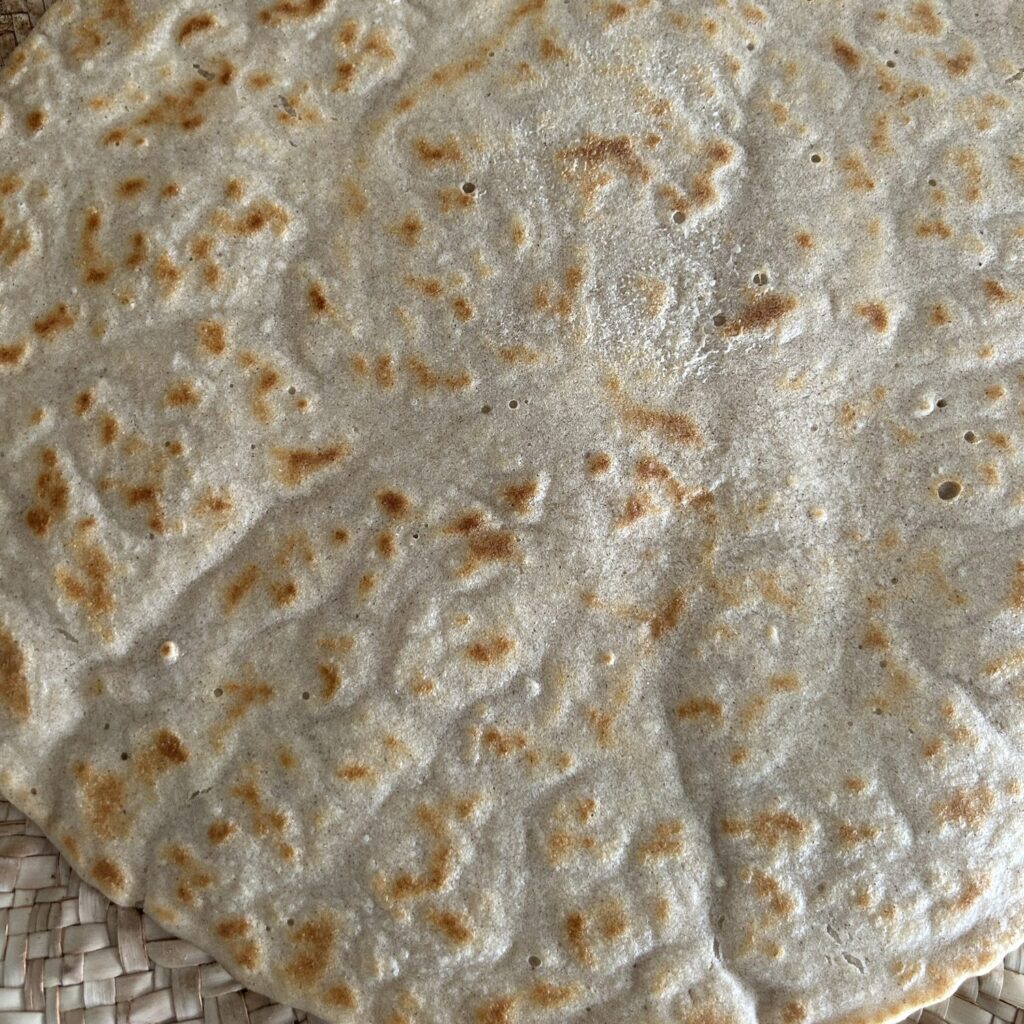
Instructions
Baking Kitcha:
- Prepare the Dough: In a large bowl, combine the flours and salt. Gradually add water while mixing until you form a soft dough. Knead the dough for about 5 minutes until it becomes smooth (a little thicker than a pancake batter).
- Roll and Cook: Heat the mogogo or a skillet and lightly grease it with oil. Pour batter on the mogogo and let the kitcha cook for about 2-3 minutes on each side until golden brown spots appear. Remove and set aside.
- Tear into Pieces: While still hot, carefully tear the kitcha into larger pieces.
- Add the ingredients: Place the kitcha pieces in a food processor. Fill it halfway and then add a tablespoon each of Te’smi and berbere. Add more kitcha pieces. Process it all together on pulse.
- Serve: Place it in a serving bowl/plate and serve it immediately while still warm. Add yogurt to balance the heat from berbere. For an authentic Eritrean and Ethiopian experience, enjoy it with a cup of tea or coffee.
- Storage: If you’d like to make this recipe in bulk, you can easily double the ingredients. You can easily store it in a glass air-tight containers and freeze it for up to three months.
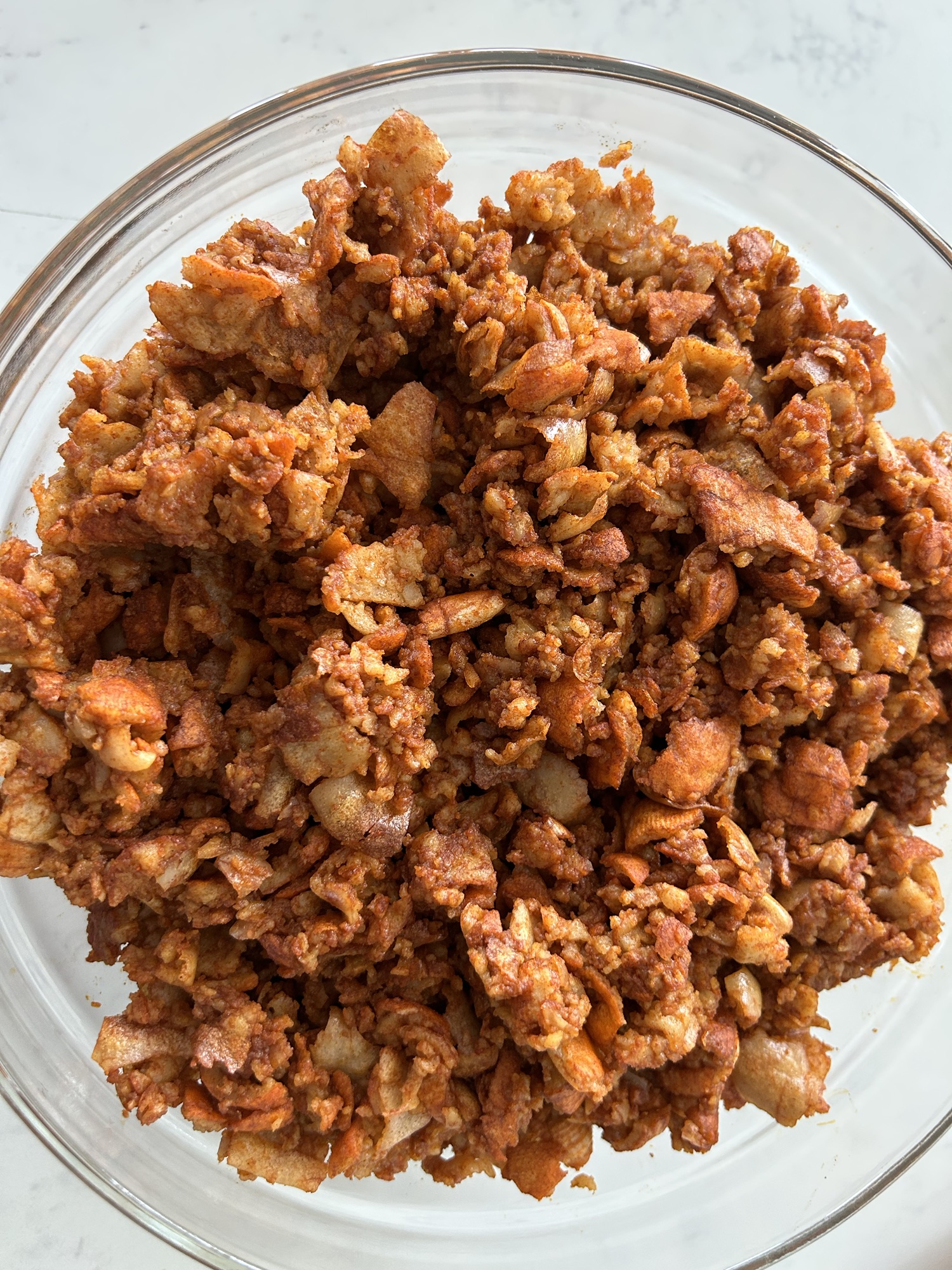
A Personal Note
- To make kitcha fitfit healthier, you can use any flour you’d like. I’ve used quinoa, spelt flour, almond flour, teff flour, barley, oats, millet …etc. I usually mix equal amounts of different flours for healthier options.
- Overnight soaked quinoa comes in handy when I don’t have quinoa flour at home. Process it in a blender with any other flour you’d like to use. If you’re a new mom and want to meal prep in advance, Kitcha fitfit comes in handy. The grain can help in milk production and the mother has an already prepared breakfast item.
- When preparing the dough, I prefer to make the dough a little runny that an unleavened Kitcha
- This recipe can be altered to suite your lifestyle such as a gluten free or dairy free (vegan) option. Use gluten free flour and substitute Te’smi with an organic virgin olive oil.
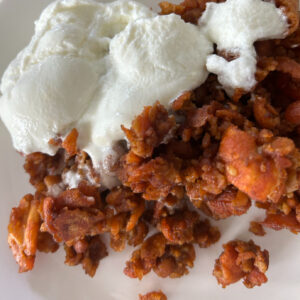
Kitcha Fitfit ቅጫ ፍትፍት
Ingredients
For the Kitcha (Flatbread):
- 1 cup quinoa flour or quinoa soaked overnight – see notes
- 1 cup Sprout
- 2 cups water
- Salt to taste
The rest of Ingredients
- Te’smi
- Berbere
- Yogurt – for serving
Instructions
- Prepare the Dough: In a large bowl, combine the flours and salt. Gradually add water while mixing until you form a soft dough. Knead the dough for about 5 minutes until it becomes smooth (a little thicker than a pancake batter).
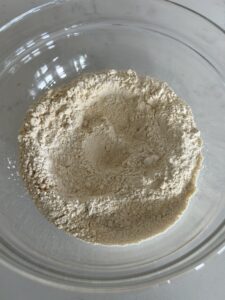
- Roll and Cook: Heat the mogogo or a skillet and lightly grease it with oil. Pour batter on the mogogo and let the kitcha cook for about 2-3 minutes on each side until golden brown spots appear. Remove and set aside.
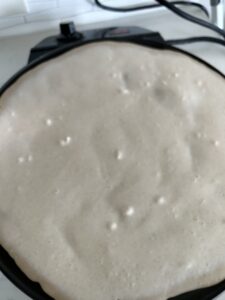
- Tear into Pieces: While still hot, carefully tear the kitcha into larger pieces.
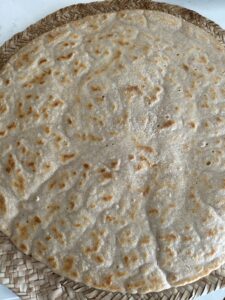
- Add the ingredients: Place the kitcha pieces in a food processor. Fill it halfway and then add a tablespoon each of Te’smi and berbere. Add more kitcha pieces. Process it all together on pulse.
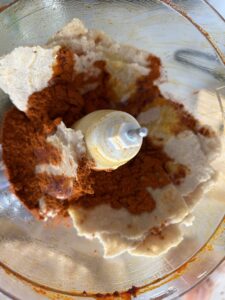
- Serve: Place it in a serving bowl/plate and serve it immediately while still warm. Add yogurt to balance the heat from berbere. For an authentic Eritrean and Ethiopian experience, enjoy it with a cup of tea or coffee.
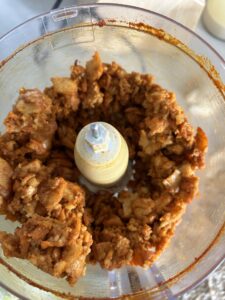
- Storage: If you’d like to make this recipe in bulk, you can easily double the ingredients. You can easily store it in a glass air-tight containers and freeze it for up to three months.
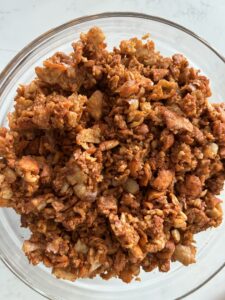

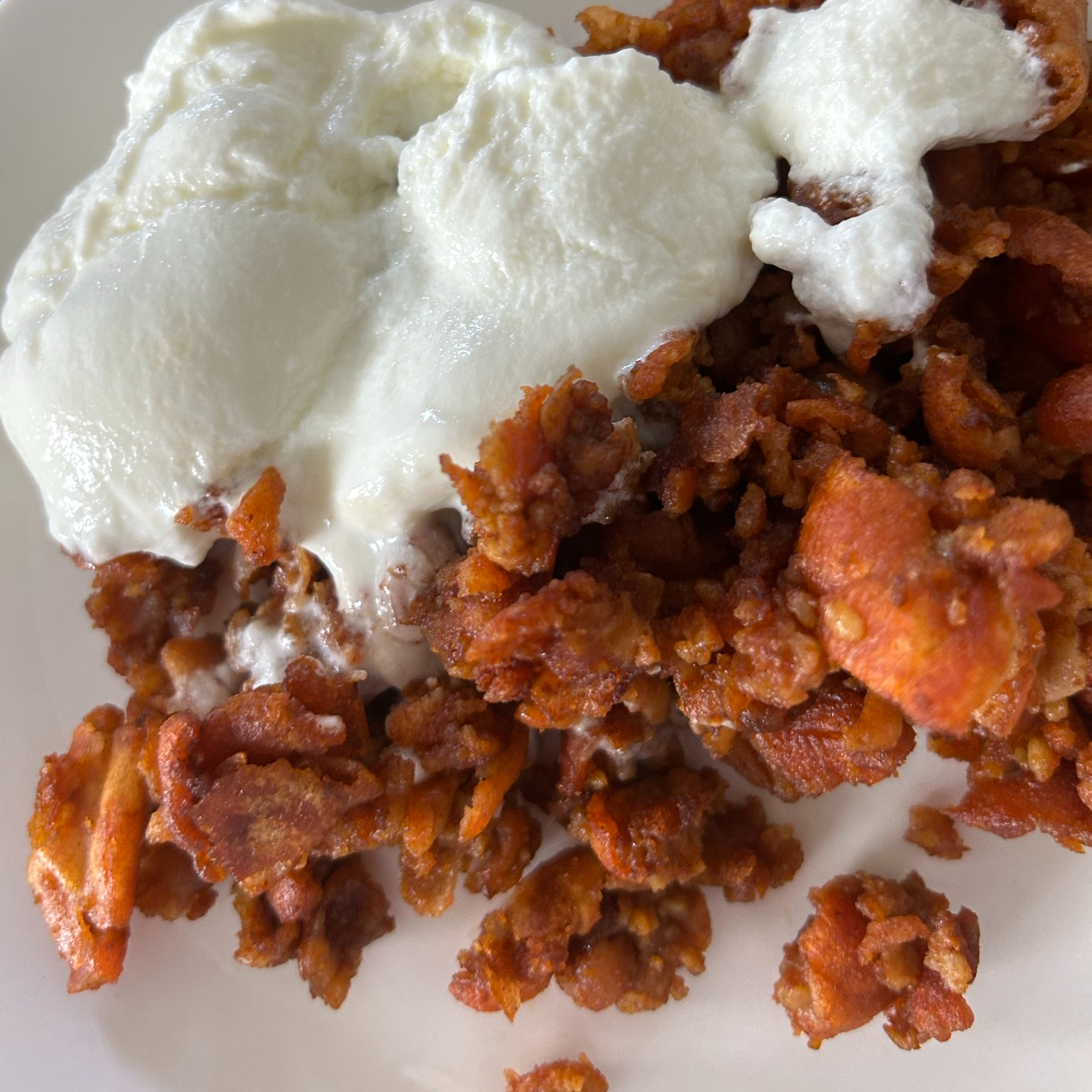
Leave a Reply